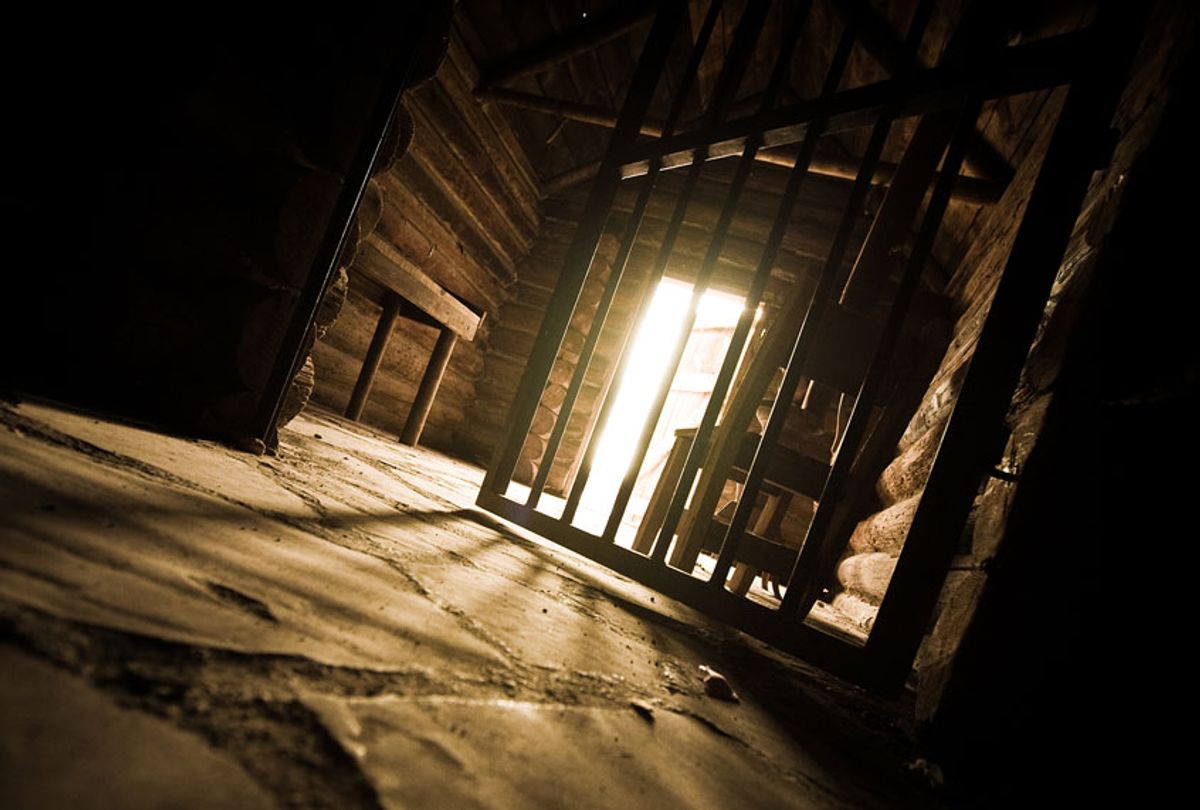A prisoner at a Central Intelligence Agency "black site" in Afghanistan was used as a training prop to teach U.S. operatives how to torture other prisoners, leaving him with serious brain damage and other ailments, newly declassified documents published this week affirmed.
Ammar al-Baluchi, a 44-year-old Kuwaiti national, is currently imprisoned at the U.S. prison at Guantánamo Bay, Cuba, where he is one of five men awaiting trial by military commission for alleged involvement in plotting the September 11, 2001 attacks on the United States. The case, which has been delayed due to disputes over the admissibility of defendant testimony extracted through torture, has been in pre-trial hearings for more than a decade.
A subject of the U.S. government's extraordinary rendition program, al-Baluchi was captured in Pakistan in 2003 and then transferred to secret CIA prison known both as Cobalt and the Salt Pit north of Kabul, Afghanistan. The so-called black site gained international attention after revelations that prisoner Gul Rahman was tortured to death there in 2002, and that instead of being punished, the CIA officer in charge of the site was subsequently promoted.
"Twenty years later, none of the those responsible for the CIA's heinous regime of torture were ever prosecuted," U.S. Rep. Ilhan Omar (D-Minn.) tweeted Tuesday in response to a Guardian report on al-Baluchi's experience. "Instead they got promotions."
According to a declassified 2008 report by the CIA inspector general's office, agency officials knew that al-Baluchi no longer posed a terror threat but rendered him to the Salt Pit, where he was subjected to techniques that were approved under the George W. Bush administration's "enhanced interrogation" regimen, as well as unauthorized torture.
Not only was al-Baluchi was subjected to the authorized torture of "walling"—in which naked prisoners were slammed against plywood and, in departures from the approved method, concrete walls—he was also used a training prop to teach trainee interrogators how to perform the technique.
According to the declassified report, "all the interrogation students lined up to 'wall' Ammar so that [the instructor] could certify them on their ability to use the technique."
The torture training sessions "typically... did not last for more than two hours at a time," the document states.
"They smashed my head against the wall repeatedly. It continued until I lost count at each session," al-Baluchi recounted. "As my head was being hit each time I would see sparks of lights in my eyes. As the intensity of the sparks were increasing as a result of repeated hitting, all of a sudden I felt a strong jolt of electricity in my head then I couldn't see anything and everything went dark and I passed out."
Previously declassified documents state that James Mitchell—who along with his associate John "Bruce" Jessen was paid $81 million by the CIA to oversee the torture and interrogation of prisoners in the so-called War on Terror—told one of al-Baluchi's lawyers that it "looks like they used your client as a training prop."
In 2018, al-Baluchi underwent an MRI examination which found "abnormalities indicating moderate to severe brain damage" which "were consistent with traumatic brain injury."
According to a neuropsychologist's evaluation, al-Baluchi also suffers from anxiety, depression, and post-traumatic stress disorder.
The inspector general's report notes that al-Baluchi's torture did not produce any useful intelligence and that he "fabricated the information he provided" in an effort to end his torment.
The document also paints al-Baluchi in a sympathetic light, referring to him as "one of the more cooperative, likable, even 'gentle' detainees," and as "one of the more intelligent or 'bookish'" prisoners. Some interrogators expressed remorse for their actions, with one saying "there is no honor in it" and another stating that he "wished he had never been asked" to participate in torture.
Al-Baluchi was subsequently transferred to numerous other black sites, including one in Vilnius, Lithuania where he was tortured by the notorious CIA operative known as "The Preacher" due to his penchant for infusing interrogation sessions with religious fervor. In 2006 al-Baluchi was transferred to Guantánamo.
The inspector general's report concludes the CIA's rationale for detaining al-Baluchi was "fuzzy and circular."
"We now know that the CIA's brutalization of Ammar at the black sites was secretly condemned by the agency itself," Alka Pradhan, one of al-Baluchi's military commission attorneys, told Forever Wars' Spencer Ackerman. "But it didn't stop the U.S. government from holding him in a CIA facility at Guantánamo, and trying to execute him using evidence derived from that very same treatment."
On Tuesday, The New York Times reported that U.S. military prosecutors are engaged in talks with lawyers for five Guantánamo defendants including al-Baluchi and his uncle, alleged 9/11 mastermind Khalid Shaikh Mohammed, to possibly negotiate plea deals that will spare the men from execution but result in their lifetime imprisonment.
The issue of torture has proved an impediment to the prosecution of terrorism suspects, and may at least partially explain prosecutors' newfound willingness to negotiate plea agreements.
Last November, seven out of eight members of a military jury convened to hear the case against Guantánamo detainee Majid Khan recommended clemency after the defendant testified how he endured torture including rape, being hung from a ceiling beam, and being subjected to the interrupted drowning method known as waterboarding.
The jurors called Khan's treatment "an affront to... the concept of justice" and "a stain on the moral fiber of America."
Numerous Guantánamo prosecutors have also resigned their posts in protest, with former lead prosecutor Col. Morris Davis condemning what he called "rigged" military commissions designed to ensure that every defendant is convicted.



Shares